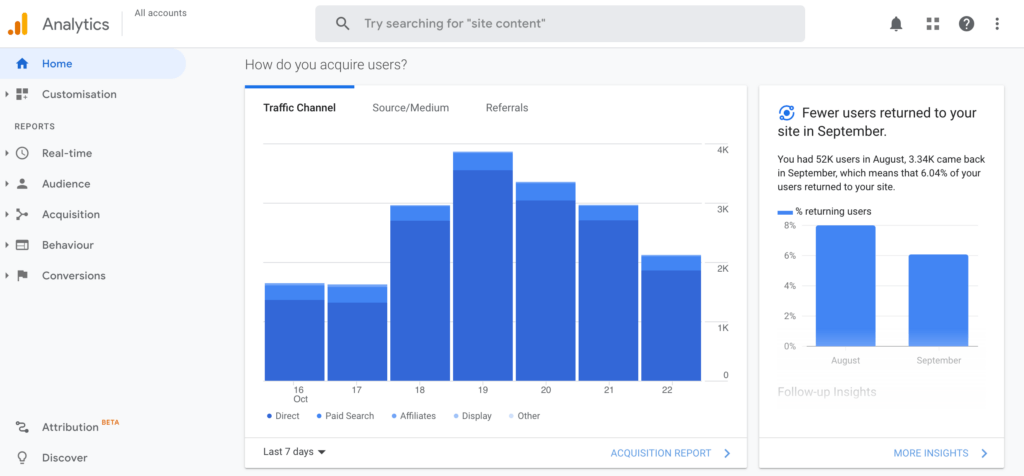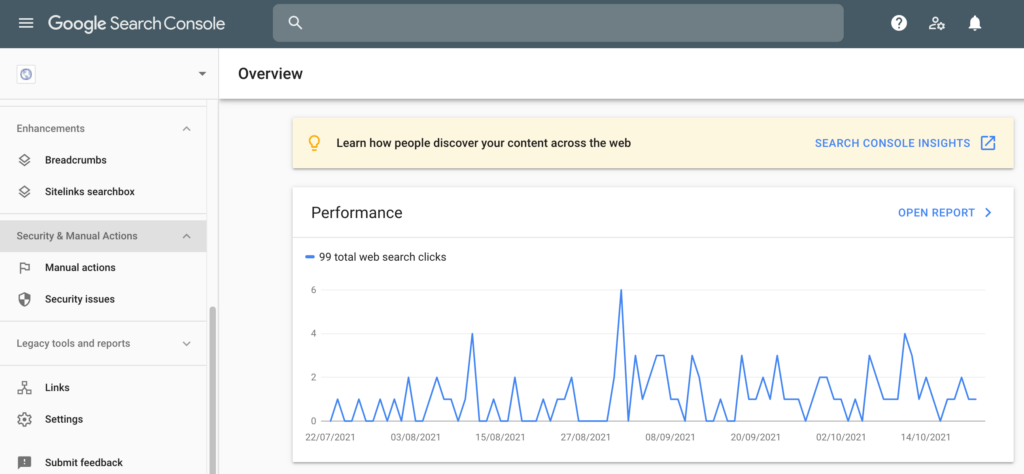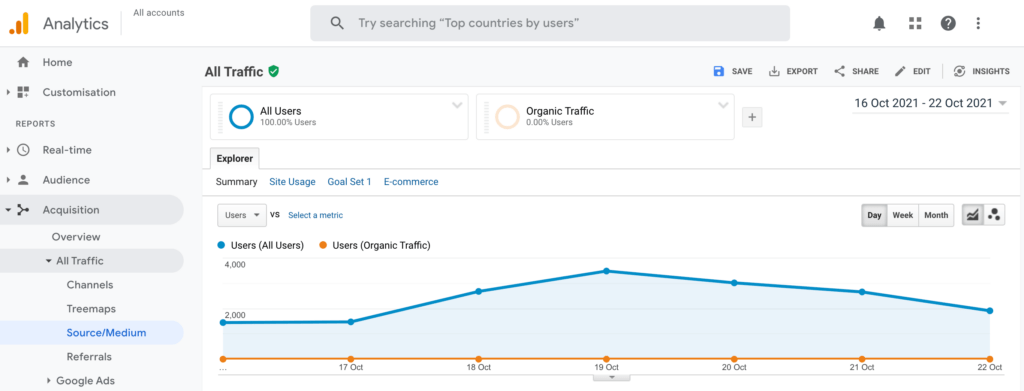[ad_1]
As a site owner, you’ve probably invested a ton of effort into climbing the search engine rankings. However, a single Google penalty can undo all of your hard work.
Fortunately, there’s more than one way to recover from a Google penalty. By reacting quickly and taking decisive action, you can minimize the damage and get your site on the road to recovery.
In this post, we’ll cover three important areas:
- We’ll discuss what Google penalties are and talk about the impact can they have on your search engine optimization (SEO).
- We’ll then show you two ways to recover from these penalties.
- We’ll give you some advice on how to avoid Google penalties altogether.
Let’s get started!
An Introduction to Google Penalties (And Why They’re Bad News for Your Site)
If your site fails to meet Google’s Webmaster Guidelines, then you may find yourself on the receiving end of a Google penalty. When you’re hit with a penalty, the rankings for your targeted keywords will drop dramatically. In the worst case scenario, your site may vanish from the search results completely.
Some of these penalties are delivered by automated algorithms, while others are dished out by Google’s human auditors. You’ll typically receive the latter if you violate Google’s Terms of Service.
While you’ll naturally want to fine-tune every part of your site for your target keywords, Google takes a dim view of black-hat SEO tactics, such as keyword stuffing. Penalties are designed to punish anyone who breaks these rules, so it’s important to steer clear of any dubious SEO techniques.
However, optimizing your site for the search engines can be a tricky balancing act. You may get carried away inserting keywords, and get penalized due to an honest mistake.
Search engines like Google are also notorious for changing their algorithms. Just because your content adheres to all of the guidelines now, doesn’t mean it’s immune from future penalties.
Every time Google updates its automated algorithm, there’s a chance you may fall on the wrong side of the update. You might even receive a penalty for content that was considered perfectly acceptable in the past.
Any change in your search engine rankings can have a disastrous impact on your traffic. Only 0.78% of internet users click a link on Google’s second page, so you really can’t afford to let your rankings slip.
If you’re hit with a Google penalty, take immediate action to remove the penalty if you want to preserve your hard-won SEO.
How to Check Whether You Have a Google Penalty
First, make sure you know the signs. Assuming you’re monitoring your traffic using a tool such as Google Analytics, you’ll want to investigate if you notice any of the following:
- Sudden drop in organic site traffic
- Sudden drop in rankings (did your page go from result #2 to result #10 without warning?)
- Not showing up in Google search

You can check whether you’ve received a manual penalty in the Google Search Console. In the left-hand menu, click to expand the Security & Manual Actions section:

Then, select Manual Actions. If the Search Console warns you about an error, then Google’s auditors may have flagged your content. If you see a green checkmark and a No issues detected message, then you’re penalty-free:

You can determine whether you’ve received a penalty based on Google’s algorithm using the Website Penalty Indicator.

Simply input your site’s URL. The tool will display your traffic over time, along with the dates of major and minor algorithm updates. If you experienced a sudden shift in traffic around the time of an algorithm update, then your content may be violating a new rule introduced in this update.
How to Recover From a Google Penalty (2 Methods)
According to SEO experts, most sites should be able to recover from a minor penalty in around 30 days. However, there is some evidence to suggest that recovering from a Google penalty may take up to two years.
Regardless of the timescale, you can speed up this process by identifying and resolving the SEO issue as quickly as possible.
Time is of the essence, so here are two ways to get on the road to recovery, today.
1. Research Google’s Algorithm Updates
If your dramatic change in traffic corresponds with an algorithm update, then your content may be breaking the new rules. The first step is verifying the exact date when your Google traffic started to drop.
In your Google Analytics dashboard, navigate to Acquisition > All Traffic > Source/Medium. Then, select Add Segment and choose Organic > Apply. This will display the number of visits you received from Google search:

You can now pinpoint the exact date when you experienced a shift in traffic originating from Google search. If this date corresponds with the algorithm change, then it’s highly likely that this update is the cause of your Google penalty.
The next step is learning more about the update. To help you out, Moz has created a guide to all of the Google algorithm changes. While investigating the update, consider how your site may be violating these rules.
Once you’ve identified the potential problem, you can take steps to address it. For example, if your penalty appears to correspond with the Page Experience Update then you should focus on improving your site’s loading speed.
This may involve configuring a Content Delivery Network (CDN), or installing an image optimization plugin such as Smush:

Depending on the size and the complexity of the update, this method can feel like a guessing game. However, resolving SEO-related issues is never a waste of time, even if you experiment with various fixes before successfully removing your Google penalty.
2. Perform an SEO Audit
If you don’t discover a correlation between an algorithm update and your change in traffic, then it’s time to perform an SEO audit. This will identify any errors that require your attention, such as broken links, duplicate content, or indexing issues.
The SEO Audit Checklist is a powerful resource that can help you perform a thorough analysis. You might also use the SEO Analyzer tool to scan your site and generate a full SEO report:

There are also plenty of free tools that are designed to identify specific SEO issues. For example, you can check for broken links using the Semrush platform:

After logging into the SEMrush dashboard, select Site Audit from the left-hand menu. SEMRush will now scan your site and display any broken links.
After addressing all SEO issues, keep a close eye on your site’s performance. If your Google traffic starts to recover, then this suggests that you’ve identified the issue and removed the Google penalty.
The Best Way to Avoid Google Penalties
When it comes to Google ranking, quality is king. Therefore, the most common cause of Google penalties is low quality content. But, what does “low quality” mean?
Fortunately, the search engine has made it pretty easy to understand using the acronym E-A-T.
Google E-A-T stands for:
- Expertise
- Authoritativeness
- Trustworthiness
Google’s algorithms and human evaluators use these three factors to determine a page’s overall quality.
For example, black hat SEO techniques are a red flag for site trustworthiness. And poorly written content (e.g., articles full of grammatical errors), put a site’s authoritativeness in question.
There’s certainly a lot more to Google’s quality standards, and we recommend you check out this article: How to Use Google E-A-T to Improve Your SEO. However, it all boils down to your main goal, which should always be to benefit your site visitors:
- Create well-written, thoroughly researched content
- Add real value to your content
- Never use your content to trick, scam, or mislead your visitors
If you follow these rules of thumb, you’ll most likely never have to hassle with a penalty in the first place.
Conclusion
When you receive a Google penalty, your traffic will drop dramatically. In the worst case scenario, your pages may even vanish from the search engine results. This can have a devastating impact on your conversions.
Let’s quickly recap two ways that you can recover from a Google penalty:
- Research Google’s algorithm updates, using resources such as Moz’s algorithm guide.
- Perform an SEO audit, using tools such as the SEO Analyzer and the Semrush platform.
- Avoid penalties in the first place by adhering to Google E-A-T standards
Do you have any questions about how to recover from a Google penalty? Let us know in the comments section below!
If you liked this article, follow us on Twitter, Facebook, and LinkedIn. And don’t forget to subscribe in the box below!
[ad_2]




